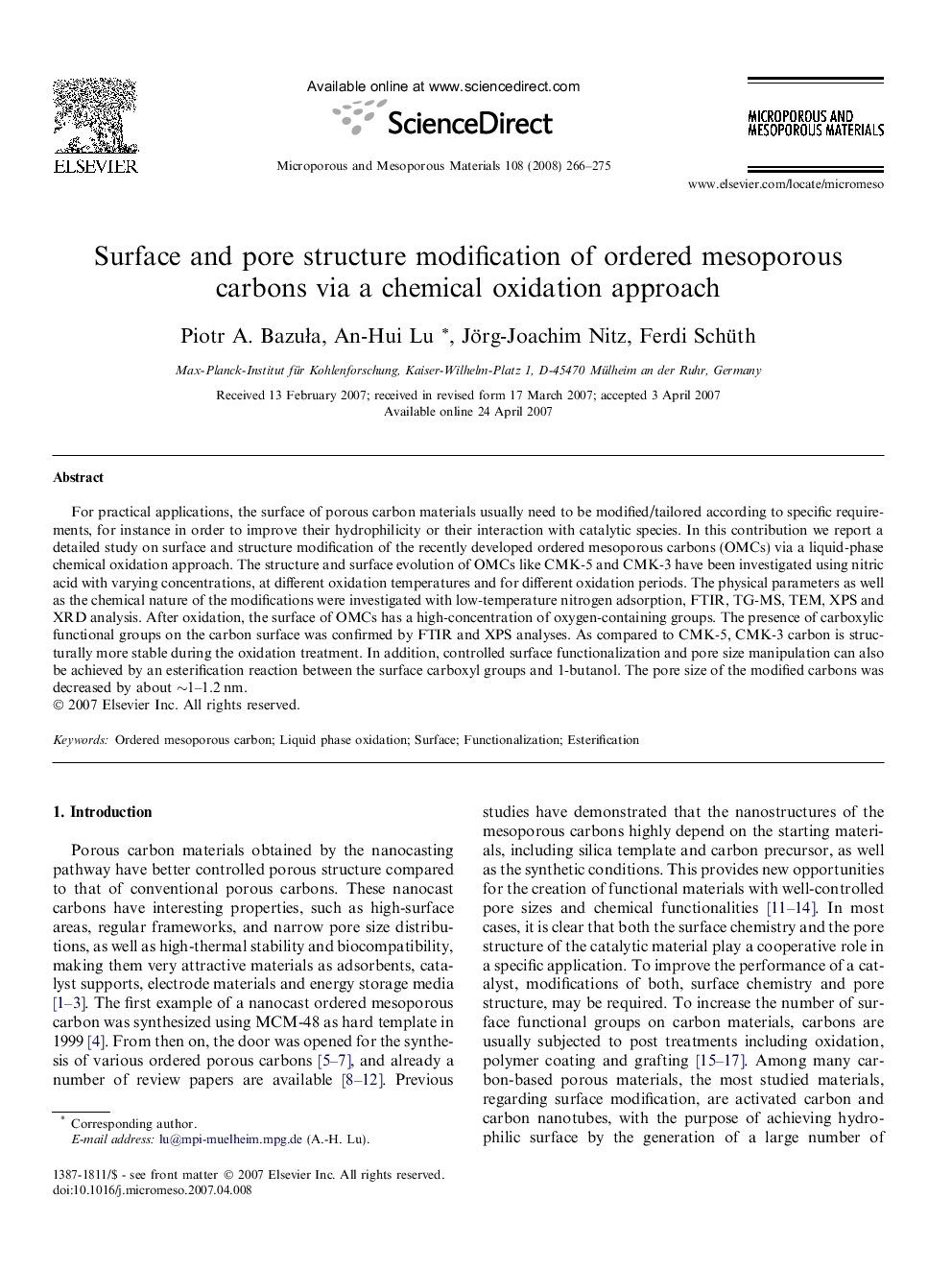| Article ID | Journal | Published Year | Pages | File Type |
|---|---|---|---|---|
| 75997 | Microporous and Mesoporous Materials | 2008 | 10 Pages |
For practical applications, the surface of porous carbon materials usually need to be modified/tailored according to specific requirements, for instance in order to improve their hydrophilicity or their interaction with catalytic species. In this contribution we report a detailed study on surface and structure modification of the recently developed ordered mesoporous carbons (OMCs) via a liquid-phase chemical oxidation approach. The structure and surface evolution of OMCs like CMK-5 and CMK-3 have been investigated using nitric acid with varying concentrations, at different oxidation temperatures and for different oxidation periods. The physical parameters as well as the chemical nature of the modifications were investigated with low-temperature nitrogen adsorption, FTIR, TG-MS, TEM, XPS and XRD analysis. After oxidation, the surface of OMCs has a high-concentration of oxygen-containing groups. The presence of carboxylic functional groups on the carbon surface was confirmed by FTIR and XPS analyses. As compared to CMK-5, CMK-3 carbon is structurally more stable during the oxidation treatment. In addition, controlled surface functionalization and pore size manipulation can also be achieved by an esterification reaction between the surface carboxyl groups and 1-butanol. The pore size of the modified carbons was decreased by about ∼1–1.2 nm.
